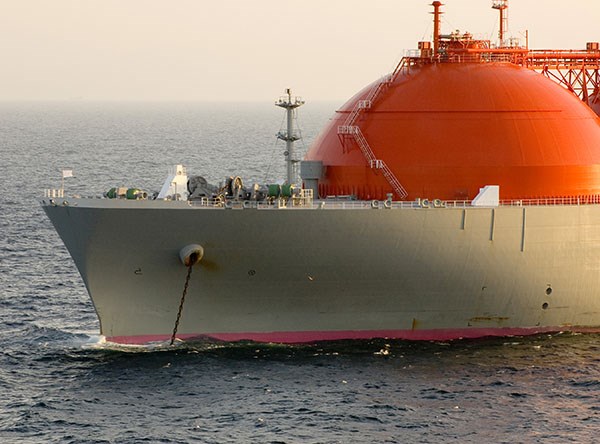Wake created by liquefied natural gas (LNG) tankers cruising Howe Sound isn’t expected to rock the shoreline, concluded a recent study.
Woodfibre Natural Gas proponents – backers of a proposal to build a LNG export plant on the former Woodfibre pulp mill site – contracted infrastructure advisors Moffatt & Nichol to evaluate the possible wave action created by ships serving the site.
The study conducted analysis based on the largest tanker that may be used to transport LNG from Woodfibre. Vessels’ wake diminishes in size with distance travelled, resulting in the largest waves located closer to the vessel, the study noted. Water depths along navigation routes within Howe Sound typically range from 200 to 250 metres. This also assists in minimizing the wake, the report noted.
“The analysis finds that vessels travelling at speeds of around 10 knots and less may not produce a noticeable wake,” the Woodfibre LNG – Vessel Wake Assessment stated.
Waves are measured from the trough to the crest. Wave heights smaller than .1 metre are considered insignificant by the study. For a vessel travelling at 11 knots and under, the wave size fell below that threshold 50 metres away from the boat.
Woodfibre Natural Gas backers didn’t know what the study would uncover, company vice-president Byng Giraud said. The proposal to transport approximately 1.5 million tonnes of LNG from the former Woodfibre site would add three to four ships to the sound per month. These vessels would likely travel eight knots per hour, Giraud said, adding they would be accompanied by up to three tugs.
The authorized speed and number of tugs that have to accompany the vessels will be outlined in Transport Canada’s Technical Review Process of Marine Terminal Systems and Transshipment Sites.
Howe Sound has been used as a mode of transport for many years, said Captain Fred Denning, president of the British Columbia Coast Pilots Ltd. Before this proposal ships serviced the pulp mill.
Howe Sound’s conditions and size are “very normal” to the B.C. coast, Denning said. It is roughly a nautical mile wide – 6,080 feet.
“I doubt that in the context of the work we do that a channel of a nautical mile would be considered narrow,” Denning said.
There’s a steady stream of large tankers through the Second Narrows to Port Metro Vancouver on a daily basis. This entrance is a quarter of a nautical mile, Denning pointed out, adding there have been no significant accidents in that waterway.
Wind is a natural component officials factor in when making decisions regarding transporting vessels. If conditions are considered too dangerous, vessels can be asked to stay out of a channel, Denning noted.
When adding traffic to a waterway, officials must consider cumulative marine noise, said Kathy Heise, a research associate at the Vancouver Aquarium. Heise studies the Pacific white-sided dolphin resident pod in the Strait of Georgia. To her knowledge only one published study in the world has examined the sound emissions of LNG tankers.
Constant marine noise can disrupt communication between animals, such as the dolphins. An "natural" experiment conducted amid the shipping silence during 9/11 linked right whales stress levels to noise, Heise said. Analysis indicated a drop in a stress-related hormones in the whales when ships stayed at port after the Twin Towers fell.
While the impacts of noise on humans has been studied since the ’50s, the impact of noise on marine life is 50 years behind, Heise said. Over the same time period, noise within the north eastern Pacific has increased by 15 decibels.
The good news is aquatic noise pollution is a fixable problem, Heise said. Newer vessels can be made to be less noisy than old boats, Heise said, noting LNG tankers are typically newer. This year, the International Maritime Organization adopted guidelines for the reduction of underwater noise from commercial shipping. The report provided some simple measures for decreasing shipping noise. It’s a tool the community could look to moving forward.
“This is something that we can actually do something about,” Heise said.



